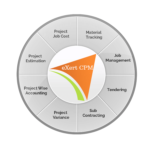In today’s fast-paced industrial environment, efficient asset management is crucial for any organization aiming for long-term success. One of the most effective strategies to ensure operational efficiency is through preventive maintenance (PM) within a robust maintenance management system (MMS). This blog post explores the significance of preventive maintenance and how it can be effectively integrated into your maintenance management strategy.
What is Preventive Maintenance?
Preventive maintenance refers to regularly scheduled inspections, servicing, and repairs designed to prevent equipment failures before they occur. Unlike reactive maintenance, which addresses issues after they arise, PM focuses on minimizing downtime and extending the lifespan of assets. Common PM tasks include routine check-ups, lubrication, parts replacement, and software updates.
Benefits of Preventive Maintenance
- Reduced Downtime: By identifying and addressing potential issues early, organizations can significantly reduce unplanned downtime, leading to increased productivity and operational efficiency.
- Cost Savings: While preventive maintenance requires an upfront investment, it ultimately saves money in the long run by preventing costly repairs and replacements. According to studies, businesses that implement PM can reduce their maintenance costs by up to 30%.
- Extended Asset Lifespan: Regular maintenance helps prolong the life of machinery and equipment, allowing businesses to maximize their return on investment.
- Enhanced Safety: PM ensures that equipment is functioning correctly, reducing the risk of accidents and enhancing workplace safety for employees.
- Improved Compliance: Many industries have strict regulations regarding equipment maintenance. A well-implemented PM program can help organizations stay compliant and avoid penalties.
Integrating Preventive Maintenance into a Maintenance Management System
To reap the full benefits of preventive maintenance, it’s essential to integrate it into a comprehensive maintenance management system. Here’s how to do it effectively:
- Asset Tracking: A good MMS allows for detailed tracking of all assets, including their maintenance history, usage, and performance metrics. This information is vital for scheduling preventive maintenance activities.
- Automated Scheduling: Leverage technology to automate maintenance schedules based on manufacturer recommendations and usage patterns. This ensures that maintenance tasks are not overlooked and are performed at optimal intervals.
- Data Analysis: Use data analytics tools within your MMS to analyze performance trends and identify potential issues before they escalate. This proactive approach can help refine your preventive maintenance strategy.
- Documentation and Reporting: Keep comprehensive records of all maintenance activities. This documentation is crucial for evaluating the effectiveness of your PM program and making necessary adjustments.
- Employee Training: Ensure that your team is well-trained on the importance of preventive maintenance and how to execute it effectively. Engaged and informed employees are key to a successful PM program.
Conclusion
Incorporating preventive maintenance into a maintenance management system is not just a smart strategy; it’s a necessity for organizations that want to stay competitive. By prioritizing PM, businesses can enhance efficiency, reduce costs, and ensure the safety and longevity of their assets. Embracing this proactive approach will ultimately lead to greater operational success and sustainability.
For organizations looking to implement or improve their maintenance management system, consider focusing on preventive maintenance as a foundational component. The benefits are clear, and the investment will pay dividends for years to come.












